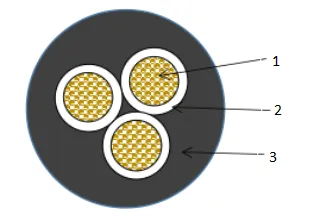10 月 . 11, 2024 17:50 Back to list
Foot Valve with Strainer for Efficient Water Control and Filtration Solutions
The Importance of Foot Valves with Strainers in Pump Systems
In various industrial, agricultural, and municipal applications, ensuring the efficiency and longevity of pump systems is crucial. One component that often plays a vital role in protecting these systems is the foot valve, especially when equipped with a strainer. A foot valve is a type of check valve installed at the inlet of a pump, typically submerged in the water source, designed to allow fluid to flow in one direction while preventing backflow when the pump is turned off. The addition of a strainer enhances this functionality, providing an extra layer of protection against debris and contaminants.
Understanding Foot Valves
Foot valves are critical components in many fluid handling systems. Their primary function is to maintain the prime of the pump, preventing the pump from losing its prime due to backflow. This capability is essential for pumps used in applications such as irrigation systems, water supply, and various industrial processes where consistent fluid flow is necessary. By preventing the reverse flow of water, foot valves help ensure that pumps operate efficiently, reducing wear and tear and prolonging their operational life.
The Role of Strainers
The inclusion of a strainer in a foot valve is particularly beneficial in environments where water sources may contain debris, sediment, or other contaminants. A strainer functions as a filter, capturing particles and preventing them from entering the pump system. This is especially important in applications that draw water from rivers, lakes, or poorly maintained reservoirs where impurities can cause significant damage to pumps and other components downstream.
Strainers come in various mesh sizes depending on the specific application, allowing operators to choose the appropriate level of filtration required. A finer mesh can capture smaller particles, but it may also increase the risk of clogging, whereas a coarser mesh allows for higher flow rates but may let larger particles through. Understanding the conditions of the water source is key in selecting the right strainer for the foot valve.
foot valve with strainer

Benefits of Using Foot Valves with Strainers
1. Protection Against Contaminants The primary advantage of utilizing a strainer with a foot valve is the added protection against larger debris that could disrupt the pump's operation. This can help to significantly reduce maintenance costs and downtime, leading to increased productivity.
2. Improved System Efficiency By ensuring that only clean water enters the pump, foot valves with strainers help maintain optimal pump performance. Cleaner water reduces the risk of fouling and cavitation, thereby enhancing the overall efficiency of the system.
3. Extended Equipment Lifespan With a foot valve equipped with a strainer, the risk of wear and damage to the pump and related components is minimized. This leads to lower replacement costs and a more extended lifespan for the entire system.
4. Reduced Maintenance Needs Regular maintenance is crucial in any pumping system. However, a foot valve with a strainer reduces the frequency and extent of maintenance needed, freeing up resources and time for other activities.
Conclusion
Foot valves with strainers are essential components in many fluid handling systems, offering significant benefits in protecting and maintaining pump performance. By incorporating these valves into water systems, operators can safeguard their equipment against debris-related damage, optimize efficiency, and extend the lifespan of their pumping systems. As the demand for reliable water management systems continues to grow, understanding and implementing these components will be vital for industries across the board. Proper selection, installation, and maintenance of foot valves equipped with strainers will ensure that pumps operate at their best, ultimately leading to enhanced productivity and cost savings.
Share
-
Understanding the Differences Between Wafer Type Butterfly Valve and Lugged Butterfly ValveNewsOct.25,2024
-
The Efficiency of Wafer Type Butterfly Valve and Lugged Butterfly ValveNewsOct.25,2024
-
The Ultimate Guide to Industrial Swing Check Valve: Performance, Installation, and MaintenanceNewsOct.25,2024
-
Superior Performance with Industrial Swing Check Valve: The Essential Valve for Any SystemNewsOct.25,2024
-
Industrial Swing Check Valve: The Ideal Solution for Flow ControlNewsOct.25,2024
-
You Need to Know About Industrial Swing Check Valve: Functionality, Scope, and PerformanceNewsOct.25,2024